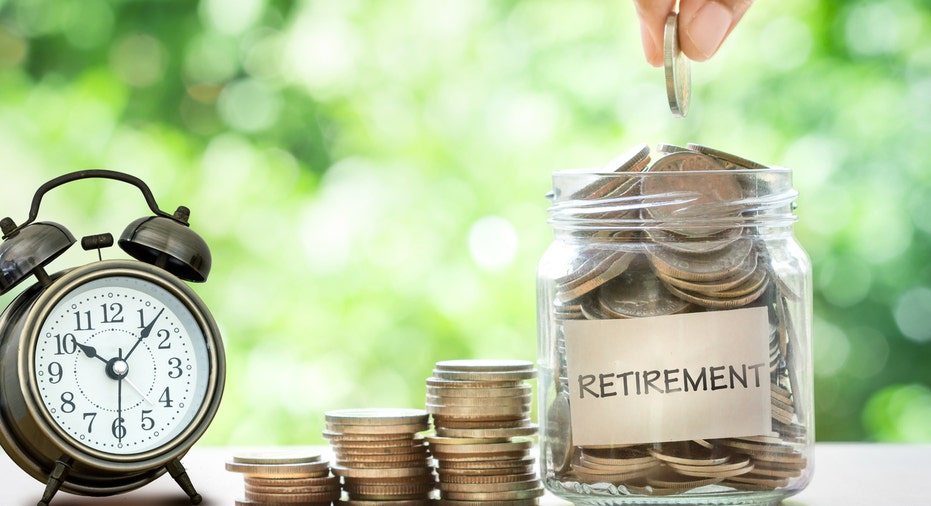Why can’t you spend at a 7% rate in retirement?

A reader of this recent article asked why he couldn't project a 7% spending rate for his retirement account, given that his investments have been returning north of 12% for several years. The answer is simple: The market doesn't always go up, and it certainly doesn't always go up by 12% per year.
This long into a bull market, it may be hard to remember, but it wasn't that long ago when the market fell by a whopping 24% over the course of a decade. Spending at a rate that may look feasible in a raging bull market is a great way to run out of money well before you run out of retirement when the market doesn't cooperate.
Why 4% is a more reasonable spending rate
A long-held rule of thumb in retirement planning is something known as the 4% rule. In essence, if you start with a diversified portfolio across stocks and bonds, maintain that diversification throughout your retirement, withdraw 4% of your starting balance in your first year of retirement, and adjust your withdrawals for inflation every year after that, you'll have a very strong likelihood of not running out of money in retirement, even if that retirement lasts as long as 30 years.
It's absolutely true that the stock market's long-term trajectory has been upwards, and that over a long period of time, stocks have delivered somewhere around 9.5% annualized return rates. The problem is that the future is not guaranteed, and those returns do not come smoothly. Depending on stocks to deliver those returns exactly when you need them to cover your costs in retirement can be a very dangerous and costly mistake that can drain your accounts too quickly.
The kitchen-table logic that supports that 4% rule
One solution to the problem of stock volatility during retirement is to own and rely on high-quality, investment-grade bonds to cover your nearer-term spending needs in retirement. While those bonds can help address the volatility risks of stocks, bonds generally bring with them a lower overall expected rate of return.
Thirty-year Treasury Bonds currently yield around 3%. Once you add a substantial bond allocation to your portfolio to cover your near-term costs, your overall portfolio's expected rate of return will drop, too. With a 50% stock/50% bond allocation and assuming 9% returns for stocks and 3% returns for bonds, your overall expected rate of return will be closer to 6%.
On top of covering your current expenses, remember that you'll need to pull money out in future years, as well, to cover your costs then. Chances are that inflation will make your costs higher than they are today, so unless you want to reduce your standard of living as you age, you'll want to attempt to cover inflation, too.
Once you retire and pull money out of your accounts to cover your costs of living, the money you take out of your accounts no longer compounds on your behalf. As a result, if you spend every dime your account earns, you won't have the ability to increase your nest egg to help fight inflation over time.
What you'll want to do is plan to spend a little less than you expect your portfolio to return and leave the excess in your account to compound on your behalf to help you combat that future inflation. For instance, if you earn 6% and spend 4%, you leave 2% growth in your account to give you that much bigger a base with which to fight the next year's inflation.
Build a plan that works for you
The 4% rule may not be a perfect strategy, but it's one that has been back tested and time worn, and it generally works well enough to be worth planning around. Don't forget that if you follow the strategy and, over time, you find your portfolio is growing faster than it needs to in order to cover your costs of living, you can always ratchet up your spending.
On the flip side, if you plan around being able to spend at a rate that's faster than your money can truly support, you'll be at a far greater risk of running out of money before you run out of retirement. There's only so far you can ratchet back your expenses before you start feeling the impact, and the older and deeper into retirement you get, the tougher it is to go back to work.
Ultimately, it's impossible to know with certainty how the future will play out until it happens. Your best bet is to build a plan for your retirement that gives you a strong chance of success, then make small adjustments along the way. While there are no guarantees for the future, planning around a 4% withdrawal rate gives you a much greater shot of success over a long retirement than you'd have by planning around a 7% withdrawal rate.
The $16,122 Social Security bonus most retirees completely overlook If you're like most Americans, you're a few years (or more) behind on your retirement savings. But a handful of little-known "Social Security secrets" could help ensure a boost in your retirement income. For example: one easy trick could pay you as much as $16,122 more... each year! Once you learn how to maximize your Social Security benefits, we think you could retire confidently with the peace of mind we're all after. Simply click here to discover how to learn more about these strategies.
Chuck Saletta has no position in any of the stocks mentioned. The Motley Fool has no position in any of the stocks mentioned. The Motley Fool has a disclosure policy.



















